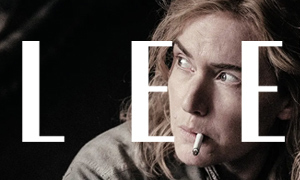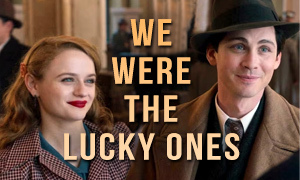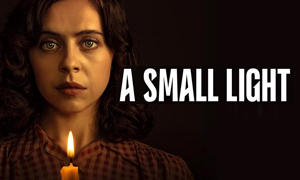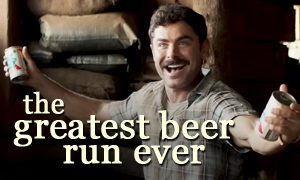Lee: History vs. Hollywood
Kate Winslet
Born: October 5, 1975
Birthplace:
Reading, Berkshire, England, UK
Lee Miller
Born: April 23, 1907
Birthplace: Poughkeepsie, New York, USA
Death: July 21, 1977, Chiddingly, East Sussex, UK (lung cancer)
Bio: Photographer and War Correspondent
Andy Samberg
Born: August 18, 1978
Birthplace:
Berkeley, California, USA
David E. Scherman
Born: March 2, 1916
Birthplace: Manhattan, New York, USA
Death: May 5, 1997, Stony Point, New York, USA (cancer)
Bio: Photojournalist
Alexander Skarsgård
Born: August 25, 1976
Birthplace:
Stockholm, Sweden
Roland Penrose
Born: October 14, 1900
Birthplace: London, England, UK
Death: April 23, 1984, Chiddingly, East Sussex, England, UK
Bio: Artist, Collector, and Husband of Lee Miller
Marion Cotillard
Born: September 30, 1975
Birthplace:
Paris, France
Solange D'Ayen
Born: April 5, 1898
Birthplace: Amiens, France
Death: November 3, 1976, Paris, France
Bio: Fashion Editor of French Vogue
Is the LEE movie starring Kate Winslet based on a book?
Yes. The true story movie LEE, which stars Winslet as Elizabeth 'Lee' Miller, a fashion model turned World War II correspondent for Vogue magazine, is based on her son Antony Penrose's 1985 biography of her titled The Lives of Lee Miller. Penrose worked with Winslet and the filmmakers to get the story correct, including giving them access to his mother's archives. Penrose told Winslet, who shares a striking resemblance to Lee Miller, that he had wanted her to play his mother ever since he saw her in Titanic.
How did Lee Miller learn photography?
"She'd learned photography from her father as a child," Kate Winslet told the Los Angeles Daily News, "and she'd always been familiar with how a camera worked."
Was Lee Miller abused as a child?
Yes. According to Miller, when she was seven her mother was in the hospital and she had been sent to stay with family friends in Brooklyn. During her time away, she was raped by a sailor who infected her with gonorrhea. However, that same year, 1914, her father, Theodore Miller, had begun taking nude photographs of her. It has been speculated that it may have been her father who had sexually abused her. Lee had a volatile youth and was kicked out of nearly every school in the Poughkeepsie area.
Years later, when she was 23, her father visited her in Paris where she was in a relationship with photographer Man Ray, in addition to acting as his apprentice, model, and collaborator. She shared a hotel suite with her father, who took photographs of her in the bathtub in the nude. Man Ray took shots of Lee and her father. In one shot, she is curled up, child-like, in her father's lap. What was captured was less an image of a father and daughter and more one of an older man and his much younger lover. Ray himself was 17 years older than Lee, a pattern that would characterize all of her relationships with men.
Did Lee Miller dislike her time as a model?
Yes. According to Kate Winslet, Miller "hated being a model" and "was deeply uncomfortable doing that job." Miller only modeled for a short period in her 20s. This was likely also due to the fact that she had been exploited by her father as a child.
Are Lee Miller's husbands and lovers depicted accurately in the movie?
No, at least not age-wise. The Lee Miller movie portrays the men in Lee's life as being her age or younger. This does a disservice to understanding the real Lee Miller, who had a pattern of falling for older men. This was likely a result of the abuse she endured as a child. Miller's first husband, Aziz Eloui Bey, was 17 years her senior. They officially divorced in 1947. Her lover Man Ray was 17 years older as well. Her second husband, Roland Penrose, was closer in age but still seven years her senior. Actor Alexander Skarsgård, who portrays Penrose in the film, is almost a year younger than Kate Winslet.
What type of camera did Lee Miller use?
A LEE fact-check reveals that like in the film, journalist Lee Miller used a Rolleiflex camera. This set her apart from many other photographers at the time. By shooting with a Rolleiflex, she was able to first look down at the image in her viewfinder and then raise her gaze to meet the eyes of her subject. This type of photography is more intimate and often makes the subjects less apprehensive about having their photo taken.
Are Lee Miller's exploits in the war depicted accurately?
For the most part, her time as a photographer in WWII seems to be depicted accurately, at least in relation to what is known about the circumstances surrounding her photos. Following the D-Day invasion of France on June 6, 1944, Miller spent five days photographing the Battle of Saint-Malo, capturing the first recorded use of napalm. Over the course of the war, she covered events such as the London Blitz, the liberation of Paris, and the horrors of the concentration camps at Dachau and Buchenwald. In many cases, the filmmakers had to imagine how the circumstances that produced each photo affected Miller. This opened the door to a fair amount of fictionalization that may or may not be accurate, but is in line with what is known about Miller.
Did Lee Miller bath in Hitler's bathtub?
Yes. In early 1945, Lee Miller tagged along with Allied forces as they advanced into Germany. It was at this time that they discovered the horrors of the Nazi concentration camps at Dachau and Buchenwald. Miller's photographs from the camps are some of her most impactful. Hours after returning to Munich from Dachau on April 30, 1945, Miller visited the apartment of Adolf Hitler. Her close friend and fellow photojournalist David E. Scherman, portrayed by Andy Samberg in the film, photographed Miller bathing in Hitler's bathtub. They carefully set up the photo. A small portrait of Hitler was leaned against the tiled wall at the back of the tub. Miller's boots, still covered in the mud of Dachau, were deliberately placed on Hitler's bathmat, which was visibly soiled.
Miller proceeded to take a bath in the tub, and afterward, she slept in Eva Braun's bed. What is not shown in the movie is that David E. Scherman also took a bath in the tub and posed for photographs. They were at the apartment on the same day that Hitler and Braun committed suicide in an underground bunker in Berlin during the Soviet invasion of that city.
Did Lee Miller suffer from PTSD after WWII?
Yes. Like in the Lee Miller movie, the true story confirms that the effects of all she had seen and experienced during the war put a strain on her home life, including her relationship with her son, Antony Penrose. Her own history of childhood abuse also likely contributed to her struggles as a mother. She battled depression and turned to alcohol to numb her pain. Like many veterans, Miller never talked about her time in the war. It was only after her death in 1977 that her son Antony discovered her archive in the attic, including 60,000 negatives and prints of everything she had done during WWII. He also found her manuscripts and her writing. The discovery helped Antony to better understand his mother, including her struggles with PTSD, alcoholism, and depression.
"I wish we had known," said Antony of his mother's trauma. "If only we had known we could have understood her better and done more for her. I felt that I'd missed so much of her because she had been so deeply secretive."
Did it really take eight years to make LEE?
Yes. While conducting our fact-check, we discovered that it took eight years to see the project through to fruition, mostly due to hurdles with securing funding. Winslet, who is both producer and star of the film, told People magazine that she sometimes thought to herself, "'Oh my God, how is this ever going to happen? How am I going to keep it going?'" According to HuffPost, Winslet was so determined to make LEE happen that she personally paid the crew's wages for two weeks during a precarious time in preproduction when financing had dried up.
"I wanted to tell this story of a middle-aged, flawed woman who had the courage to take a risk, and the determination to make her way into those male-dominated spaces," Winslet told the Los Angeles Daily News. "To bear witness and to be that visual voice for the victims of conflict."
Was Kate Winslet injured on the set of LEE?
Yes. Winslet sustained serious injuries on the first day of filming in Croatia when she slipped and fell. "I had three massive hematomas on my spine, huge," Winslet told HuffPost. "I could barely stand up." She was taken to a hospital as a precautionary measure.
What would Lee Miller think of her own historical biopic?
In Lee's 1956 article "What They See in the Cinema", she expressed her fondness for the "heroic fare" of the cinema, including "the great big epic!" She continued, "I love extravagant and gorgeous 'historicals' – melodrama, ambiguity, inaccuracy and all, as long as the heroes are close-up close and the background has panoramic splendor."
It seems that Lee would not be against invoking creative license in order to make the movie more enjoyable. We know that Lee Miller herself sometimes staged her photos to evoke more emotion. Kate Winslet admitted that they often had to fictionalize the circumstances that led to each photo, as well as the impact those moments had on Lee. Overall, Lee's son Antony Penrose said the movie is "incredibly accurate" in its portrayal of his mother. This is despite there being little to no camera footage of Lee and certainly practically none of her talking. Credit goes to Kate Winslet for visiting Farleys House and Gallery, the former home of Lee Miller, numerous times and pouring through the archives to better capture the woman she was portraying.







